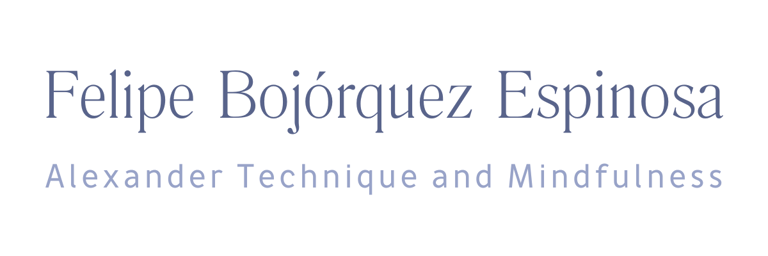What is peripersonal space and why is it important for you to know about it?
NEUROSCIENCE AND ANATOMY
Felipe Bojórquez Espinosa
What is peripersonal space and how does it affect your musical practice?
Have you ever driven into a tunnel and ducked your head because you felt like you were “going to hit the ceiling”? Or have you ever switched to a new musical instrument and, at first, felt like it was completely foreign to your body? If you can relate to either of these situations, what I’m about to share might interest you.
But before that, I invite you to try a short exploration that will help illustrate what I want to tell you:
Stretch your arms out as if you wanted to reach as far as possible with your fingertips.
Move them up, down, and to the sides.
Make large circles with your arms extended, gently.
This invisible volume of space around your body, reaching as far as your arms and legs can extend, has been called peripersonal space—and it is part of you. And I don’t mean this metaphorically, but as a physiological fact.
Through a process called mapping, your brain annexes this space to your body, covering you with a kind of “phantom skin.” The maps your brain creates to encode your physical body are directly and individually connected to every point in that space, and they also include the potential space you can reach.
In other words, your being doesn’t end where your skin ends—it extends outward and blends with the world around you.
Your brain also faithfully maps the space beyond you when you use tools. Imagine holding a stick and touching a wall or the floor with it. Your body extends all the way to the tip of that stick, to the point where you can feel the texture of the floor through it. The length of the stick has been incorporated into your peripersonal space.
Moreover, peripersonal space is not static—it is elastic. Like an amoeba, it expands and contracts to adapt to your goals. It shifts every time you change clothes, use your phone, or play your musical instrument. For example, when you drive a car, your peripersonal space expands to include it—from bumper to bumper, encompassing the doors, tires, and roof. While driving, you can sense the texture of the road almost as intimately as if you were walking in sandals. When entering a tunnel or parking garage with a low ceiling, your brain feels the ceiling’s closeness to your body, as if it were your own head. That’s why you instinctively duck.
Similarly, when you play your musical instrument, your peripersonal space expands to include it. The brain cells that normally represent the space up to your fingertips extend along the instrument, turning it into an extension of your body.
This mapping process allows you to gain greater movement precision. As you build experience and skill with your instrument, your peripersonal space adapts to include it more efficiently. When approached correctly, this can reduce unnecessary tension, improve coordination, and allow you to move with greater freedom and confidence. This phenomenon also occurs in other contexts, such as surgeons controlling micro-robotic tools, or NASA technicians operating robotic arms in space. If you were to learn how to operate a crane, your peripersonal space would extend all the way to the tip of the hook.
Every point in our body, every internal organ, and every point in space up to the end of our fingertips is mapped within the brain. The ability to feel, move, and act in the physical world arises from an immense network of flexible body maps distributed throughout the cortex—maps that grow, shrink, and transform to meet our needs.
In medicine and rehabilitation, the re-education of body maps has far-reaching applications. It is used to help people lose or gain weight, make peace with their bodies, recover from a stroke, and in the rehabilitation work of phantom limbs. It also provides new ways of understanding human emotions, the perception of pain, and physical well-being.
In the musical realm, working with these maps allows us to develop greater confidence in our abilities. By understanding how our body perceives and maps the space we inhabit, we can release unnecessary tension and move with more freedom. This not only improves the precision and fluency of our performance, but also opens new possibilities for connection with our instrument, fostering holistic well-being and making our musical practice more effective.
Re-educating our body maps provides a valuable lens through which to examine how we relate to ourselves, to our instrument, and to the world around us.
Related articles
Well-balanced flutist
Alexander Technique and Mindfulness in everyday musical practice.
Specialized support for high-performance flutists and flute students.
© 2025. All rights reserved. Privacy policy.
Menu:
Lessons
About me
